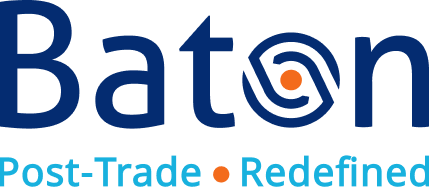Few in the markets and banking business will argue with the notion that streamlining operations through removal of manual processes and reduction of settlement risk is a worthy goal. However, when it comes to budget allocation, these areas have consistently been overlooked in recent years, with technology spend gobbled up by electronic distribution, risk management and regulatory compliance solutions.
But now the tide is turning. The Covid-related period of intense market activity earlier this year, combined with the physical dislocation of staff, shone a clear light on some of the inefficiencies of the post-trade world. But even before that, firms were already focusing more attention on opportunities to make real gains, especially in the face of ever-mounting pressures on costs, capital and liquidity, and risk.
The fundamental issue is that complex and manual processes are expensive and risky. Errors result in financial loss, customer dissatisfaction and (often) regulatory sanction. Business capacity is constrained, and, increasingly, operations teams are (quite rightly) refusing to take on new processes unless they are fully automated. To cap it all, inefficient processes mean that liquidity is locked up, often for days.
So, what’s the solution? While the ultimate goal may be to replace the proliferation of legacy systems that encumber most businesses, this is a massive task with material risk and cost. Brian Cunningham, (CIO for Enterprise Technology at Bloomberg) recently observed that CTOs are thinking about the practicality of what they can adopt now.
At Baton, we see that in most cases three broad areas need to be tackled: data availability, deployment of business rules and processing of payments.
Data relating to outstanding financial obligations and available assets/liquidity needs to be delivered in close to real-time, across business silos, in a normalised manner. This data is key to monitoring the business and providing the input for decisions.
Business rules need to be established and implemented to allow for the automation of alerts and actions. With real-time data that has been normalised and aggregated, many tasks that are currently performed manually can be processed in a fully automated manner.
The final step is the actual processing of payments, which must be sequenced to meet key business objectives, such as risk and liquidity. Instructions should be generated in an automated manner with no need to re-key, thereby eliminating the very real concern of releasing a payment for an incorrect amount.
Firms that fail to resolve the inefficiencies in their post-trade processes run the risk of falling behind. For those that get it right, the rewards are compelling. Better use of bank and client assets improves returns and reduces liquidity drag. Elimination of manual processes reduces costs and increases capacity. And better data and controls allow for vastly improved risk management and controls.
Baton Systems is changing the way payments are made in the world’s largest financial markets. For more information, contact us today.
